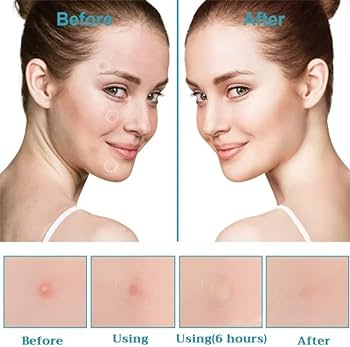Skin tags or acrochordons are soft, noncancerous growths that commonly appear in the skin folds of armpits, neck, eyelids, breasts, and groin area. These growths are caused by loose collagen fibers that become trapped inside thicker parts of the skin.
Skin tags are also very common, affecting about half of the population. They are also more prevalent in older adults, people who are overweight, or have diabetes. These skin lesions are normally harmless, although they can be painful if rubbed by jewelry or clothes. Skin tag removal is not necessary unless it causes pain or you want to get rid of it for cosmetic reasons.
Causes of Skin Tags
Acrochordons form when the body develops additional cells in the top layers of the skin. They most commonly appear in skin folds and areas where normal movement causes the skin to rub against itself.
How Likely Is It That I Will Acquire Skin Tags?
With aging, the likelihood of acquiring skin tags increases. You may also be in jeopardy if.
- Skin tags run in your family.
- Have skin problems such as Birt-Hogg-Dubé syndrome, diabetes, or obesity.
- High levels of growth factors, can occur during pregnancy.
How To Remove Skin Tags At Home?
Some home skin tag removal methods are more successful and safe than others. There are also other products available on the market to treat skin tags. Before attempting any of the following, consult with a doctor.
1. Bands and Patches
A skin tag removal band shuts off the blood flow to the root of the skin tag. The cells die without a blood supply, and the tag falls off. This is called ligation.
Removal patches contain medicines. If you leave a patch on the tag for a while, the tag may fall off.
2. Creams
In certain circumstances, these creams can be beneficial. But avoid creams containing tea tree oil or salicylic acid, which can damage the skin or cause contact dermatitis. The directions for using some of these products advise wiping the skin with a damp cloth and filing down the tag before applying the medicine to ensure that it is properly absorbed by the skin. Some of these products claim the skin tag should peel off after 2-3 weeks.
3. Freezing Kits
Over-the-counter freezing kits contain chemicals that reduce the temperature of the skin tag. The low temperature kills bothersome skin tissue. However, over-the-counter kits do not reduce the temperature sufficiently to function instantly. It may take numerous applications before you observe any benefits. Dermatologists utilize liquid nitrogen to reduce skin temperature. It makes their freezing procedure more successful and faster than over-the-counter methods for skin tag removal.
4. Apple Cider Vinegar
Some individuals believe that soaking a piece of cotton in apple cider vinegar and putting it on the skin with a little bandage can eliminate a skin tag. The apple cider vinegar procedure is believed to take up to two weeks it to succeed, but there isn’t any scientific evidence that it’s a successful procedure to remove skin tags.
5. Lodine
According to anecdotal evidence, people can eliminate skin tags with liquid iodine. However, there is not much research to support this. Anyone who wants to give it a shot should first cover the skin around the tag with coconut oil or petroleum jelly. After that, wet a Q-tip in iodine and wipe it on the tag. Bandage the affected area until the iodine dries completely. Repeat this procedure twice a day until the tag falls off.
When To Avoid Home Remedies?
Try not to remove skin tags at home if they are present near eyes, genitals, extremely huge or long, causing pain, itching, or bleeding. In such circumstances, seek medical attention.
Professional Treatments
Skin tag removal surgery is a popular outpatient process. Based on the size and location of the skin tag, your doctor will perform one of the following treatments after numbing the area with an anesthetic.
The following are professional treatments for removing skin tags:
- Cauterization: Burning off the skin tag. Most tags disappear after a few treatments.
- Cryotherapy: Freeze the tag with liquid nitrogen. In most cases, one or two treatments are adequate.
- Ligation: A healthcare provider ties a surgical thread around the tag to limit blood flow, forcing it to fall out.
- Excision: Your doctor will simply clip out the skin tag at its base using surgical scissors. The size and placement of the skin tag will decide whether stitches or bandages are required.
- Electrocautery. Your doctor might potentially use a specific electric current to burn the skin tag off.
Aftercare
The procedure utilized to remove a skin tag determines how you should care for your skin thereafter. You will almost certainly be instructed to keep the skin clean and dry. Gently wash and dry once or twice daily.
If the skin tag has been surgically eliminated, you may be instructed to wear a bandage over it for many days. In rare situations, you may be advised to leave the wound exposed. Your doctor may also advise you to use an antibiotic ointment.
Stitches may be required for larger wounds. Your healthcare practitioner will instruct you on how to care for your sutures and wounds. For the first 24 to 48 hours following the removal operation, you should keep the area clean and covered.
If you have cryosurgery or cauterization to remove a skin tag and your clothes rub against the area, you may need to bandage it to prevent discomfort.
Avoid items that might interfere with healing after skin tag removal, such as cleansers, peroxide, antibacterial soap with alcohol, and iodine.
Can Skin Tags Grow Back?
Skin tags that have been completely removed will not grow back. However, it is possible to develop a new skin tag close to where you previously had one.
Is Toothpaste Effective At Removing Skin Tags?
Toothpaste is a very abrasive home treatment for skin tags. The menthol in the toothpaste may trigger skin sensitivity, particularly if you have sensitive skin. Furthermore, putting toothpaste on your skin can make it extremely dry and flaky, therefore it is recommended to avoid using one to remove skin tags.
Is It Feasible To Remove A Skin Tag Using Clippers?
We strongly advise against using this method to remove skin tags. Using a clipper requires constant pushing and twisting of the skin, which causes a lot of bleeding. If left untreated, this can be highly uncomfortable and can lead to skin infections. Furthermore, using this skin tag removal method will almost certainly result in a scar, which you wouldn’t like.
Is Skin Tag Removal Painful?
Skin tag removal techniques might be mildly uncomfortable. You are given medicine to reduce pain.
How Will The Skin Look Once The Skin Tag Has Been Removed?
In the days after the surgery, the treated area will most likely scab over. You may notice minor skin flaws once the scab breaks off. However, they will be barely perceptible to others.
How Can I Prevent Future Skin Tags?
While prevention is not always possible, various precautions can be taken to reduce the risk of skin tags. Maintaining a healthy weight, exercising regularly, proper hygiene, and avoiding irritation or friction in the areas prone to skin tags can all be beneficial.
Can I Remove Skin Tags At Home Without Any Risks?
While home removal methods can be effective, they are risky. It’s important to follow proper hygiene, safety precautions, and instructions to minimize the risk of infection, scarring, and other complications.
What Are The Signs Of Infection After Removing A Skin Tag?
Signs of infection may include increased redness, swelling, warmth, pus, or persistent pain. Seek medical assistance right once if you suspect an infection.
Can I Remove Skin Tags During Pregnancy?
It is generally not recommended to remove skin tags during pregnancy unless they are causing significant discomfort. Hormonal changes during pregnancy can lead to an increased risk of skin tags. Consult your doctor before attempting any removal methods during pregnancy.
Summary
Skin tags are generally innocuous and do not require treatment unless they cause inflammation. Although home cures and over-the-counter medicines can be effective and cost-effective alternatives, if a skin tag does not respond to home therapy, bleeds, or continues to spread, consult your doctor. Several treatments can be used to properly remove a skin tag while causing minimum





